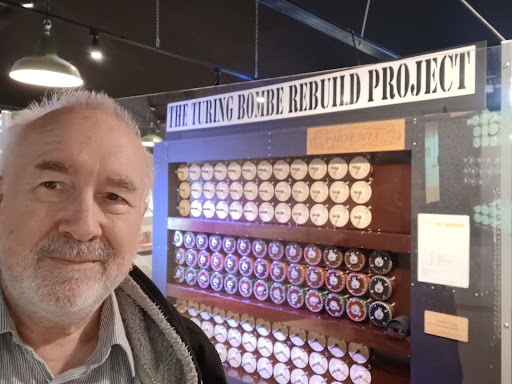If you are unfamiliar with Bletchley Park and its role in British counter-intelligence during WWII, I invite you to look at this web page which provides its background:
https://en.wikipedia.org/wiki/Bletchley_Park

I greatly enjoyed wandering through all the buildings, which have been restored to their WWII colors of cream and green, with brown linoleum floors. Many of the rooms have been refurnished with 1940s desks, chairs, and accessories in order to give visitors a genuine feel for how it must have been to work there.
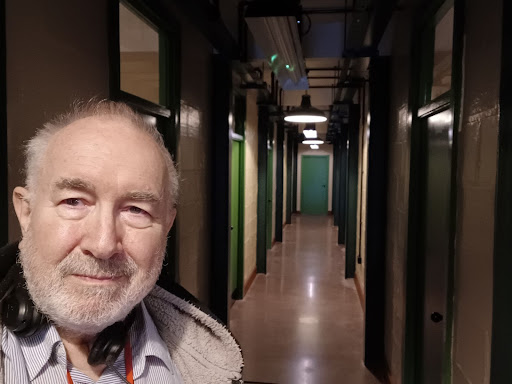 Various exhibits showed some of the equipment related to activities that went on here, including several Enigma machines.
Various exhibits showed some of the equipment related to activities that went on here, including several Enigma machines.
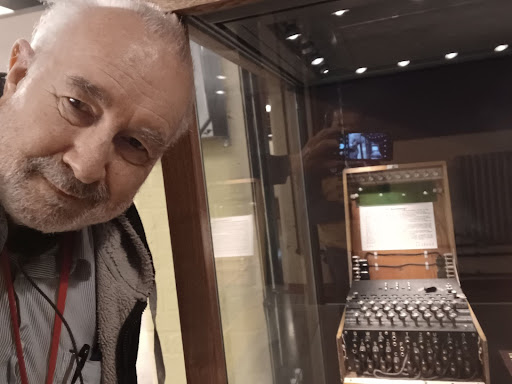
These machines allowed the Germans to encrypt their messages using a combination of rotors that yielded 158,962,555,217,826,360,000 different encryption patterns (that’s nearly 159 quintillion)! No wonder it was considered secure by the Germans.
However, the combined brains of Polish and British mathematicians eventually came up with a way to crack it. Probably the most famous of them was Alan Turing, whose statue is featured in the small museum.
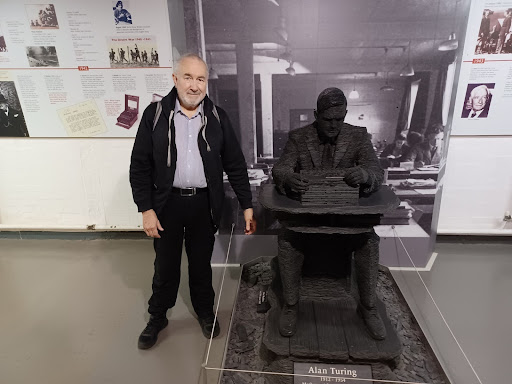
Speaking of museums, a short walk from Bletchley Park is the National Museum of Computing (https://www.tnmoc.org/), which houses the world’s largest collection of working historic computers.
Though I did not actually work on a 1970s ICL mainframe, the 200MB removable disk canisters (one is near my left shoulder) were familiar since computer manufacturers in those days used the same ones.
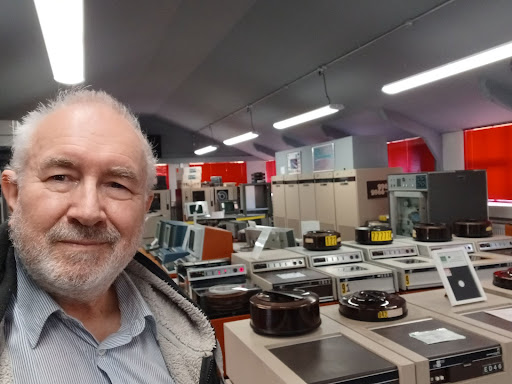
The highlight of the day was seeing a working reconstruction of the Turing Bombe computer used to decode German Enigma messages during WWII.
